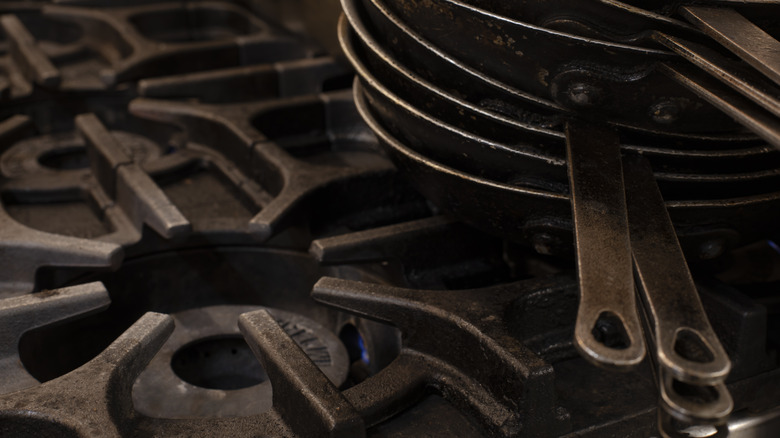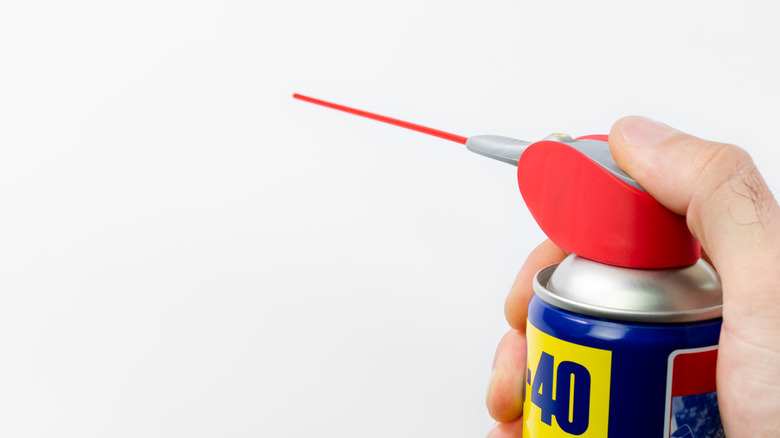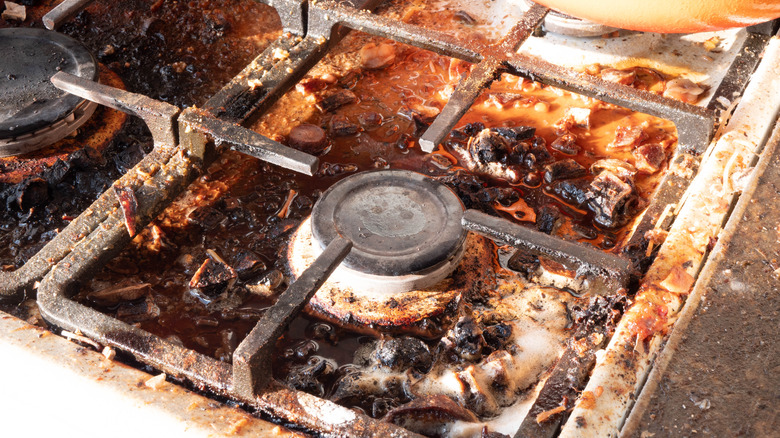Using WD-40 To Clean Cast Iron Stovetops: Good Idea Or Recipe For Disaster?
Cleaning a cast iron stovetop can be challenging due to its porous and reactive nature. Cast iron is prone to accumulating baked-on residues from cooking oils and food spills. Its porous surface retains flavors, making standard cleaning methods insufficient. Harsh abrasives or dish soaps can strip away the seasoning, a non-stick layer formed by oils during cooking. Additionally, water contact may lead to rusting, necessitating thorough drying and immediate seasoning after cleaning. Balancing the removal of residues without compromising the seasoning layer poses a challenge, requiring specific care to maintain the stovetop's durability and cooking performance. Nevertheless, one unsuspecting item that will make this process easier is a can of WD-40.
WD-40 is effective for cleaning cast iron stovetops due to its ability to penetrate and loosen stubborn residues without harming the seasoning layer. The product's formulation includes a mix of solvents and lubricants that break down grease, grime, and carbon deposits. The solvent properties of WD-40 help dissolve tough, baked-on substances, making them easier to wipe away. WD-40's lubricating components facilitate the removal of debris without damaging the cast iron's natural non-stick coating. Additionally, WD-40 provides a protective barrier against moisture, preventing rust formation, which is extremely important for cast iron surfaces. When used sparingly and followed by a thorough wipe-down and seasoning, WD-40 offers a convenient solution for maintaining a clean and well-preserved cast iron stovetop. Therefore, it's not a bad idea to count your cast iron stovetop among the places in your kitchen that could use WD-40.
How to use WD-40 to clean your stovetop
Among the many tips for using WD-40 at home is to start by ensuring the stovetop is cool to the touch to prevent burns. Begin by removing any loose debris or crumbs with a dry cloth or paper towel. This initial step helps prevent scratching when applying WD-40. Next, spray a small amount of WD-40 onto the soiled areas of the stovetop. Be conservative with the application to avoid excessive residue. Allow the WD-40 to sit on the surface for a few minutes, letting it penetrate and loosen the baked-on residues.
Using a soft brush or scrubbing pad, gently agitate the surface, focusing on the areas with the most significant buildup. The goal is to dislodge the loosened debris without causing damage to the cast iron. Exercise caution to preserve the stovetop's seasoning layer.
After scrubbing, wipe the stovetop thoroughly with a clean, dry cloth or paper towel to remove the dissolved residues and excess WD-40. Ensure that no residue remains on the surface to prevent any potential off-flavors during cooking. For a final touch, it's advisable to season the cast iron stovetop after cleaning. Apply a thin layer of cooking oil or a specialized cast iron conditioner to the surface and heat it briefly to help the oil bond with the metal, enhancing the non-stick properties and preventing rust.
Cautions for using WD-40 to clean cast iron stovetops
While WD-40 can be effective for cleaning cast iron stovetops, caution must be exercised to preserve the integrity of the cookware. Above all else, it's important to ensure the stovetop is cool before applying WD-40 to prevent injuries. Moreover, WD-40 is extremely flammable and caution must be exercised to avoid any open flames or sparks during its application. It is essential to allow the stovetop to cool completely before using WD-40 to prevent the risk of ignition. Be sure to wipe up any excess residue and wait at least 30 minutes after application before igniting any flames near the application site to avoid the risk of fires or injuries.
Additionally, WD-40 is not intended for use on surfaces meant for direct food contact. The product is not food-grade and residues left behind may pose a toxicity risk. That's not to mention the fact that they won't taste great either. After cleaning the stovetop with WD-40, it is imperative to thoroughly wipe down the surface to remove any remaining residue and to ensure a safe cooking environment. On that note, WD-40 should not be used on cast iron cookware at all to avoid this danger.
Finally, there is potential for the solvent properties of WD-40 to strip away the seasoning layer of the cast iron when used with harsh or abrasive scrubbers. To mitigate this risk, use WD-40 sparingly, and avoid tools that may compromise the seasoning or scratch the surface.


